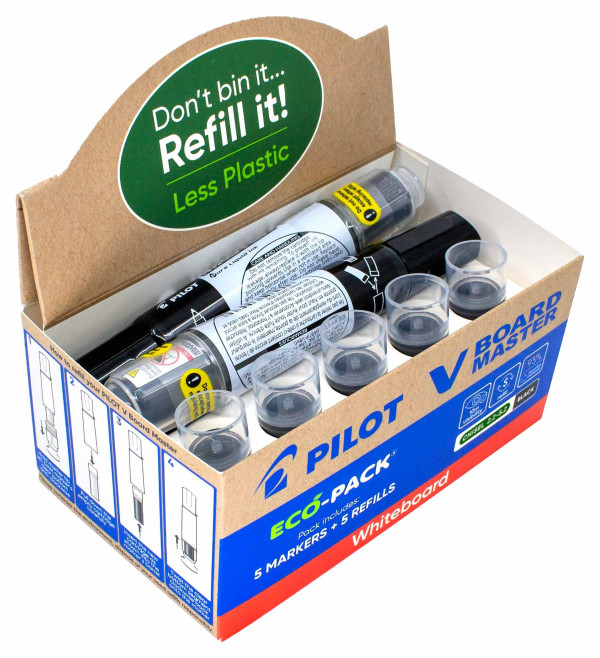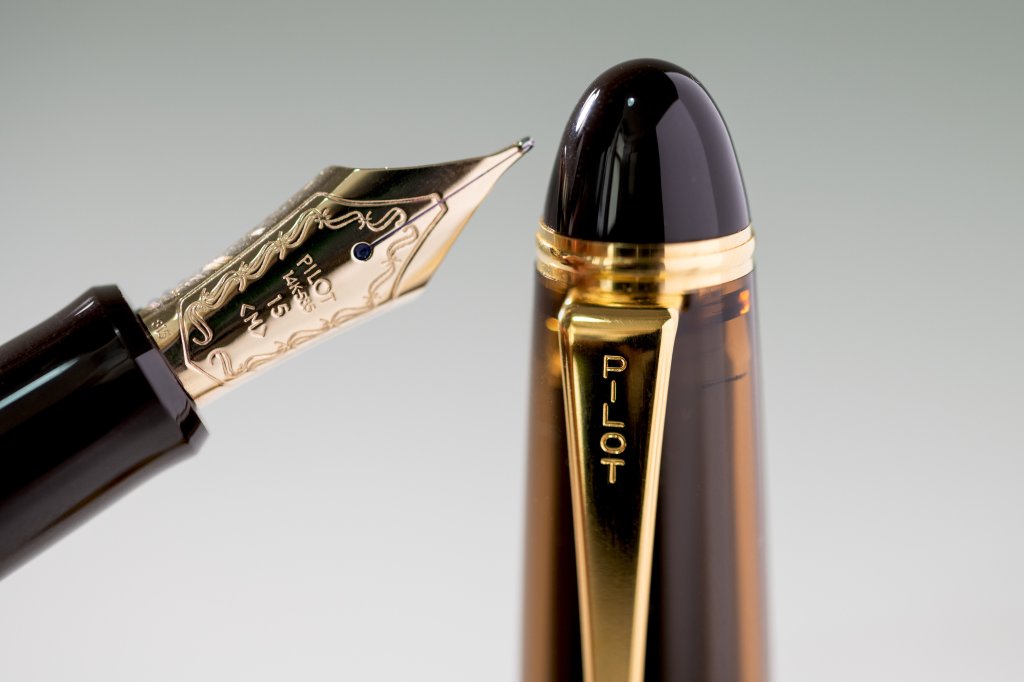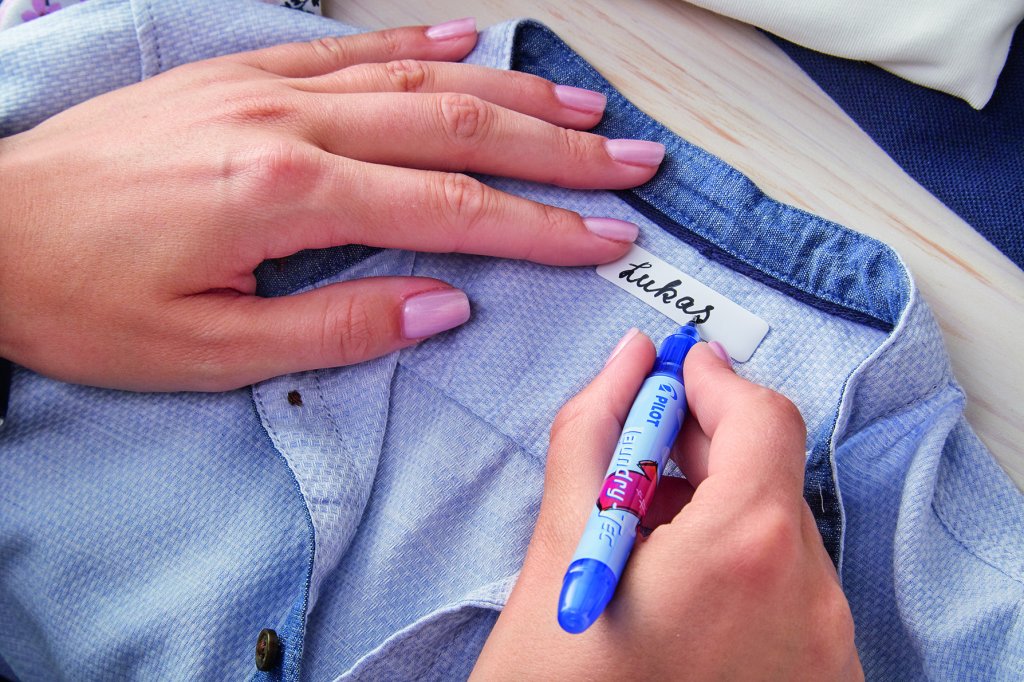Key Takeaways
The fountain pen is a marvel of technology that relies on gravity and capillary action to function properly without leaking all over the page.
These pens consist of a number of components, including the nib, the feed, and the converter.
Fountain pens require proper maintenance to function optimally and to prevent clogs and leaks from occurring.
Core Components of a Fountain Pen
The Nib or Writing Tip
Arguably the most important part of the pen, the Nib is the tip that releases ink onto the page. It’s made from various metals, including (most commonly) gold, steel, and iridium. They’re a delicate part of the pen and should be protected at all costs.
If you ever drop a fountain pen, it’s likely to fall nib-down, and this could ruin the pen. Hence, it’s a great idea to be extra mindful when handling the pen.
Nibs come in various sizes, from extra-fine to broad, which influences the writing style of your pen. Predictably, extra-fine offers finer, more precise lines, while broad makes the thickest, most distinctive lines.
Most fountain pens offer a range of nib sizes, like our own CUSTOM 823, which offers fine, medium, and broad sizes to suit your needs.
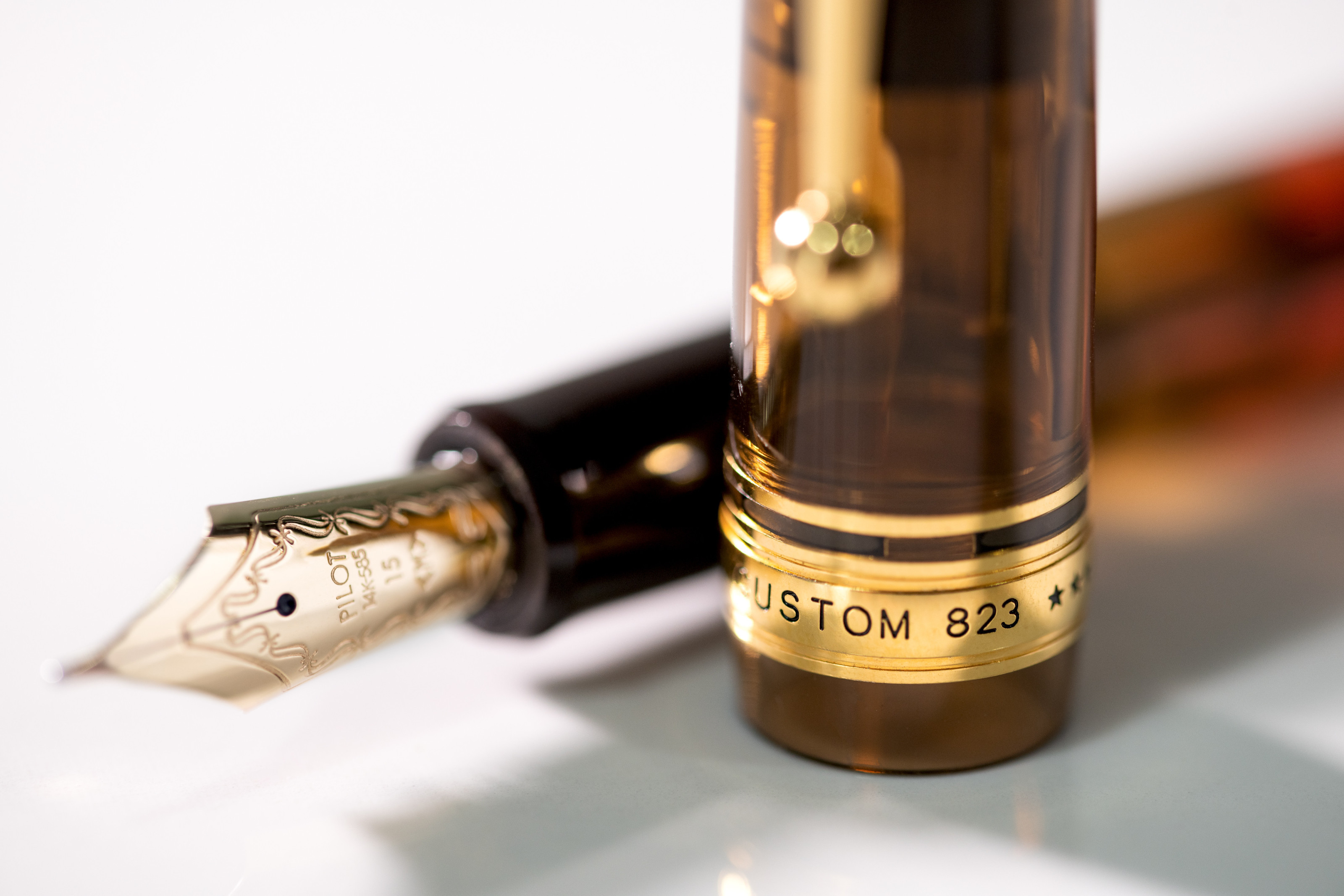
The Converter
The converter houses several components of the pen, and also makes up the bulk of it. It’s the first place to look when troubleshooting your fountain pen, as well.
The most important part of the converter is the ink reservoir, where the ink is stored in a fountain pen. It’s a core part of learning how to refill your fountain pen. Other components of an ink converter include the seal, the rod, the shroud, and the knob.
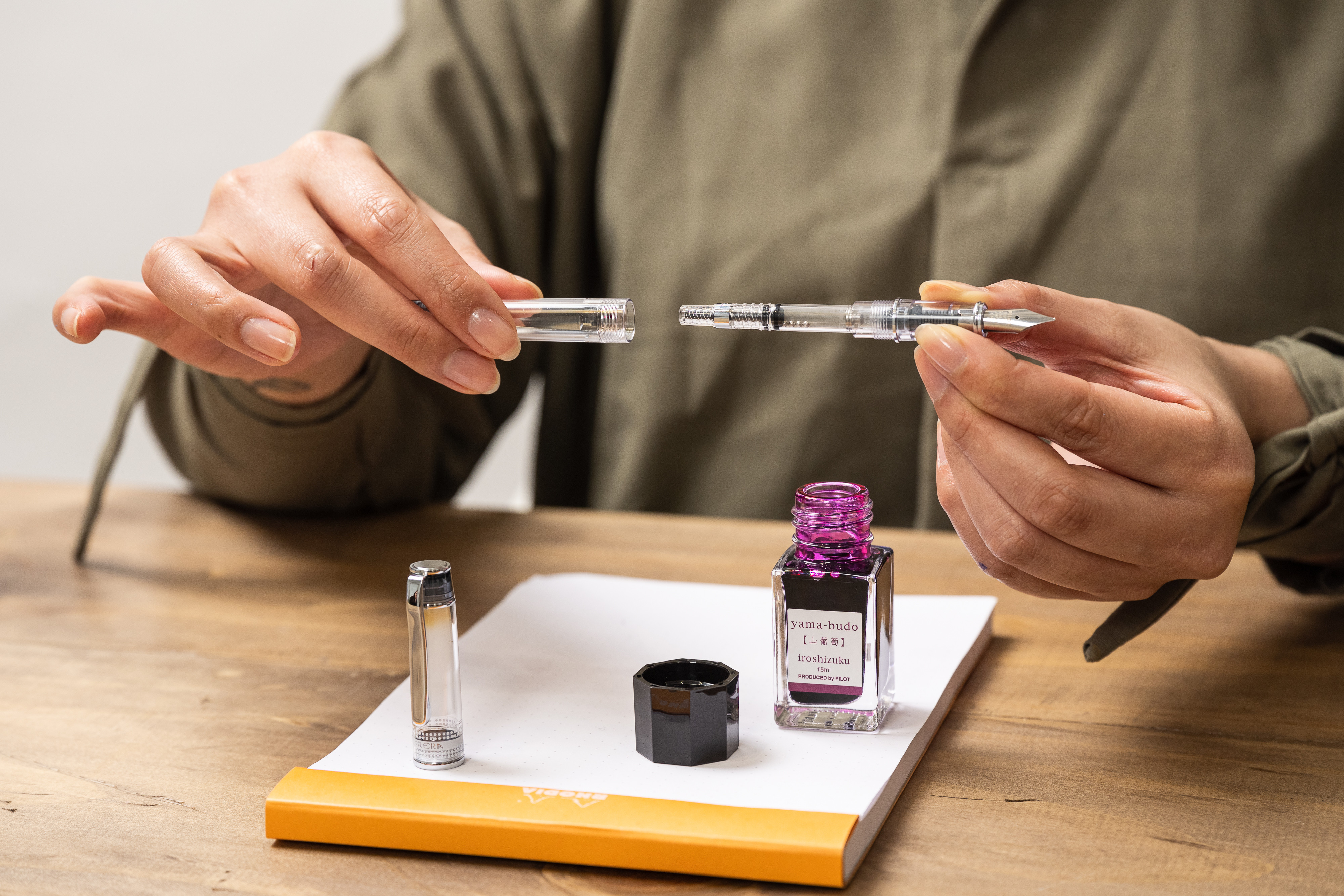
For those new to fountain pens, an alternative to using a converter is an ink cartridge - a small, disposable ink container that’s simple to insert and replace. However, converters offer the flexibility of using a wide range of bottled inks.
Vacuum filler fountain pens, such as our CUSTOM 823, don’t have a converter but instead house the ink directly in the pen barrel. This allows the pen to hold more ink, and by screwing down the piston, you can cut the ink flow and prevent any chance of leakage.
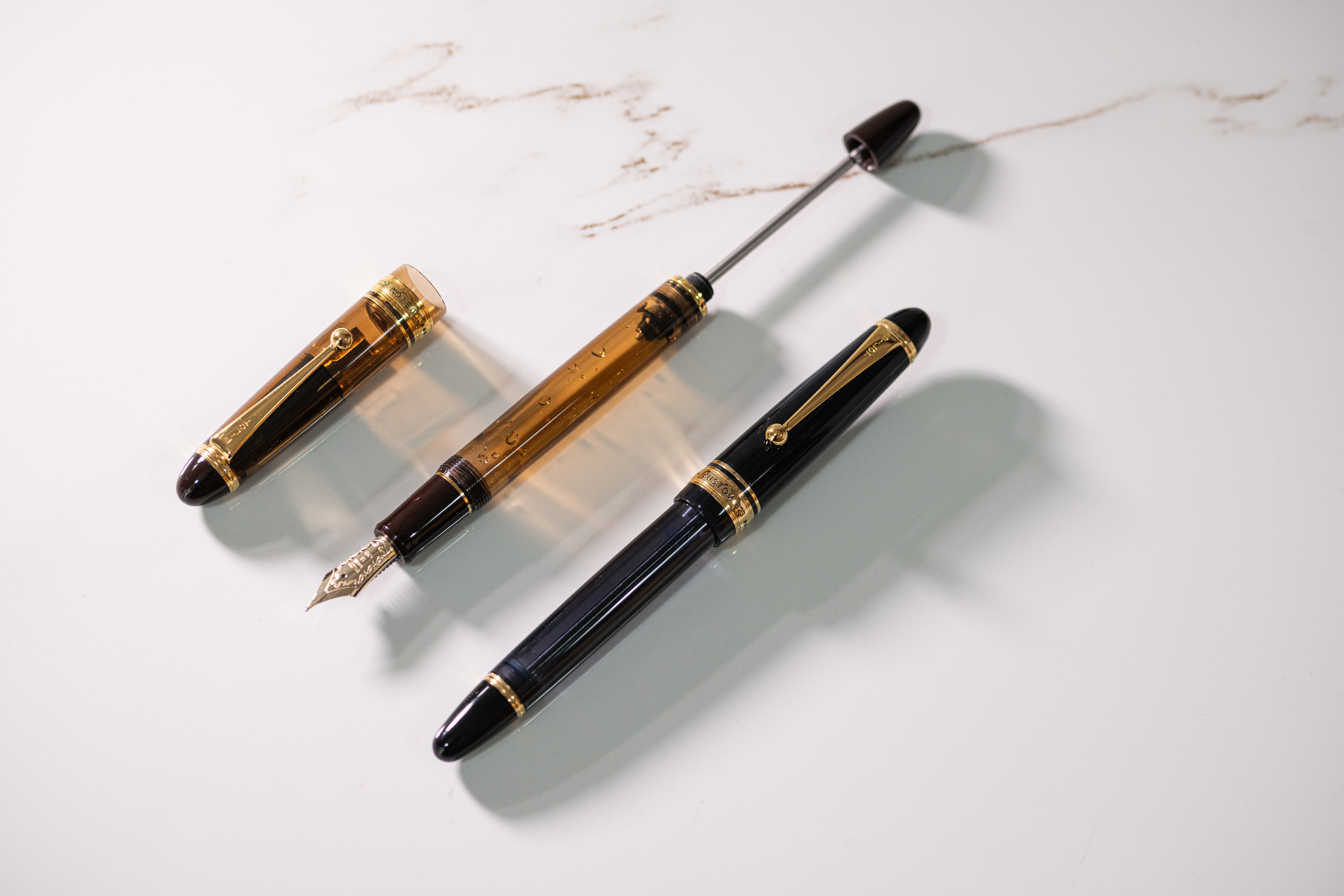
The Feed
The feed is the next most important part of the fountain pen, and it sits between the ink reservoir and the nib. Its core purpose is to provide a consistent ink flow even when writing at different speeds.
It’s a finely crafted component in the pen where even small discrepancies can affect ink flow and consistency. It’s usually made from plastic or ebonite.
The components of the feed include the post, the ink channel, the fins, and the wings.
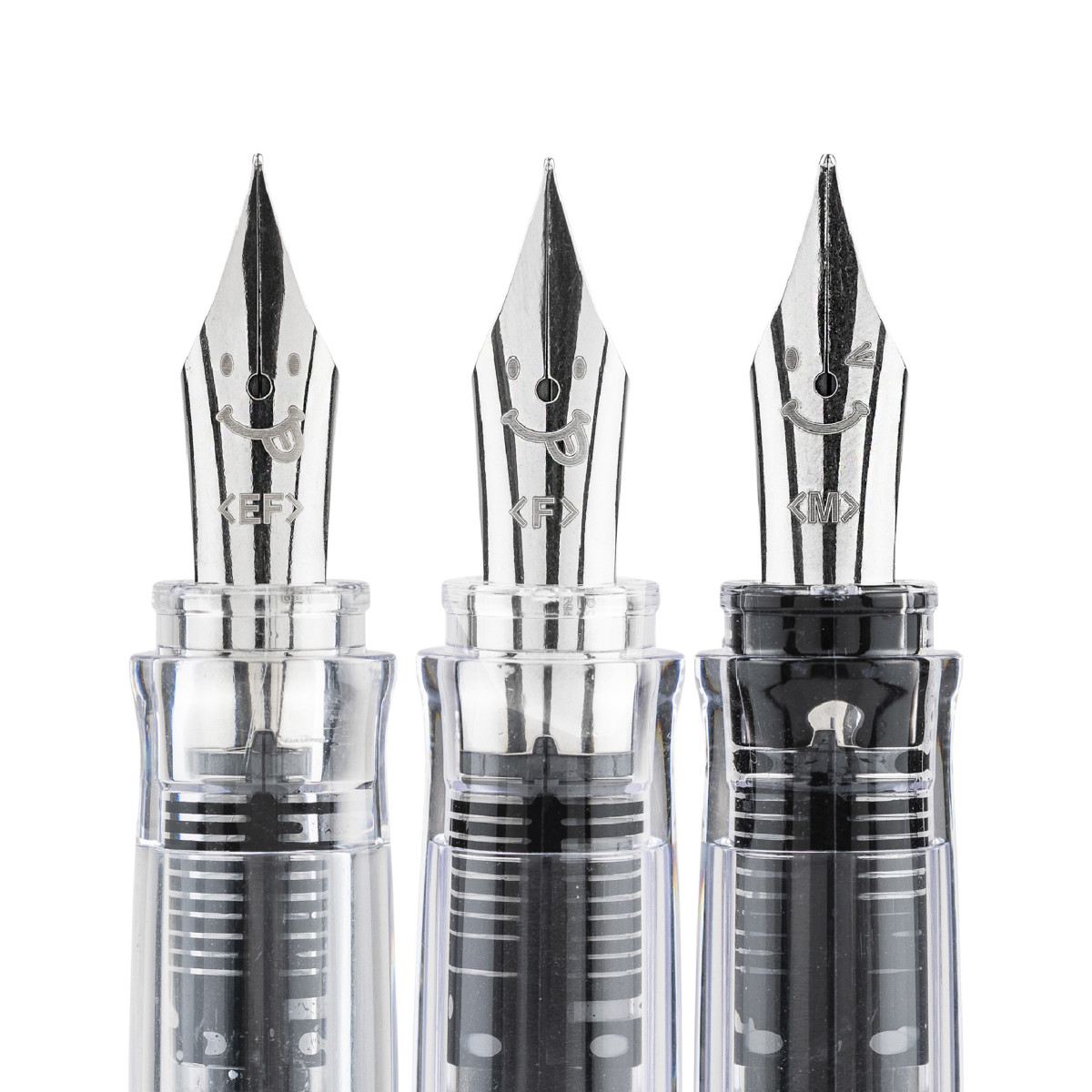
How Ink Flows in a Fountain Pen
Capillary Action & Gravity – The Science Behind Smooth Writing
Capillary action moves ink through the pen using adhesion and surface tension, ensuring smooth, consistent flow. It’s the secret behind why a fountain pen feels so smooth.
As you write, ink is drawn from the reservoir via the post and travels through the ink channel. The fins regulate the flow of the ink, providing a consistent ink flow in different conditions. The ink then travels past the wings and gathers at the tip of the feed.
When the nib contacts the paper, this ink is drawn from the feed and absorbed by the paper, and the capillary action continues, allowing the renowned smooth flow of ink that fountain pens are so well known for.
Unlike ballpoint pens, which often require a fair amount of pressure to apply ink to the page, fountain pens can almost float across the page and require very little pressure to actually write.
It’s also important to hold the nib the right way up and find the “sweet spot” of the pen for smooth writing. You can learn more in our fountain pen writing guide.
There’s another topic we need to discuss, and that’s whether fountain pens leak as much as portrayed in popular media.
Do Fountain Pens Really Leak? Debunking the Myth
There’s a common misconception that fountain pens often leak, and that’s simply not true. Cheaply made fountain pens may leak, but if you buy a quality pen, you’re far less likely to experience leaks.
This is because the capillary action only allows the tiniest amounts of ink to contact the nib at any point in time. As long as the cap is in place, you can safely carry your pen (nib up at all times) without worrying about leaks.
However, rapid changes in air pressure or temperature can contribute to a leak in an otherwise “healthy” fountain pen. Another potential cause of leaks is a damaged component. Some pens will also “burp.”
This is caused when a pen is not stored correctly and allowed to bounce around in a briefcase or backpack, which can cause the pen to leak. Finally, storing a fountain pen nib-down will guarantee that you end up with an ink-filled cap, so always store your pen with the nib facing upward.
For the most part, however, modern fountain pens don’t leak under normal circumstances. With that out of the way, let’s explore how the nib functions and contributes to the smooth writing experience.
The Role of Nib Flex & Pressure Sensitivity
Flexible nibs are a specialised feature designed to create line variation through changes in writing pressure. Historically, vintage dip pens offered dramatic flex for calligraphic styles like copperplate. Modern fountain pens, however, are generally firmer, with only a few models offering true flexibility.
Most everyday fountain pens are designed for consistent, controlled writing and use firm nibs — stainless steel nibs, in particular, are often called "nails" because they offer little to no flex.
At PILOT, the Falcon fountain pen and select CUSTOM models fitted with Falcon nibs are specifically crafted to deliver greater pressure sensitivity and expressive line variation. It's important to avoid applying pressure to standard nibs, as they are not designed to flex and can be damaged.
But to keep your fountain pen reliable, maintenance is a necessity. Let’s take a look at some maintenance best practices.
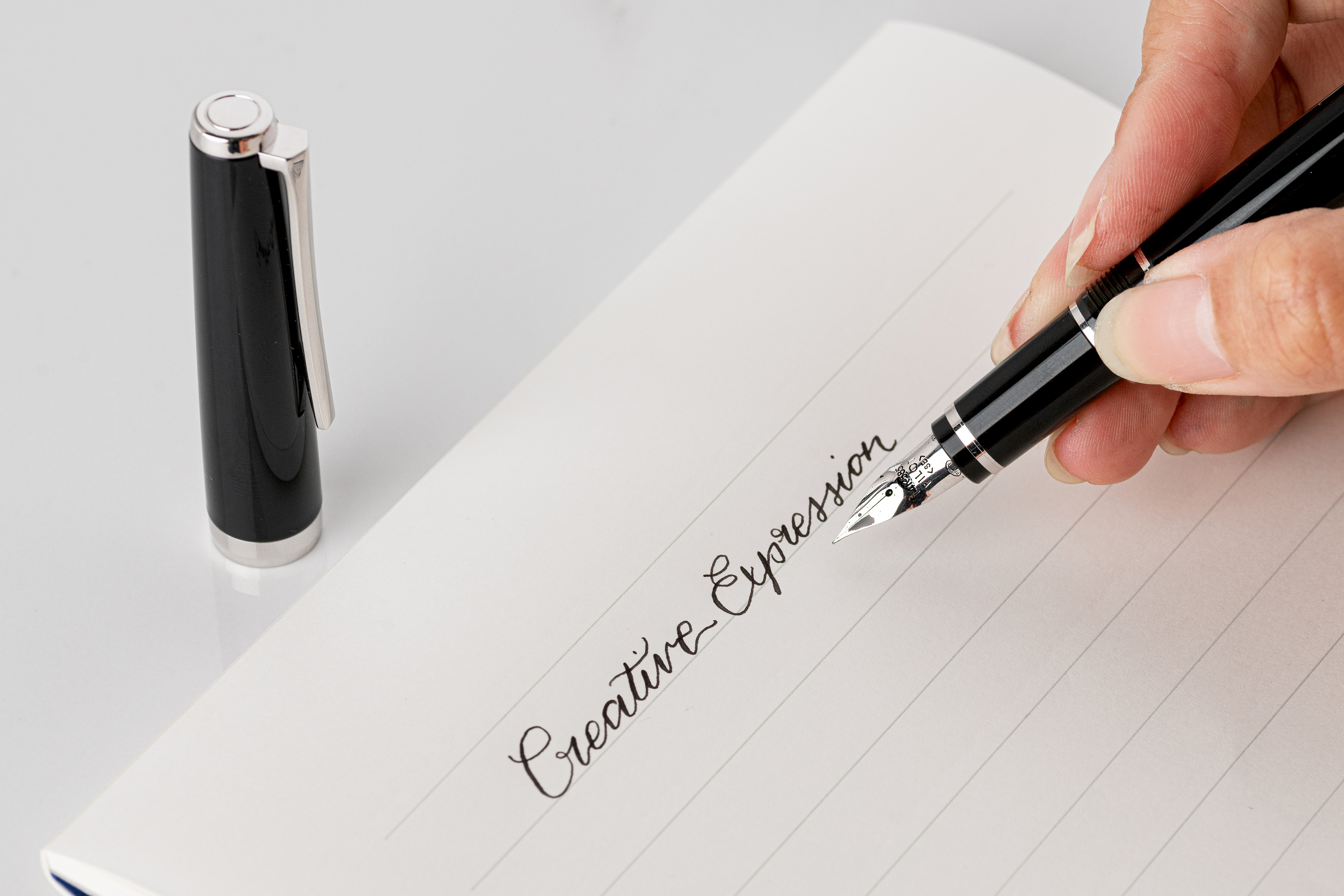
Fountain Pen Maintenance: Keep Your Pen in Top Shape
Cleaning & Preventing Clogs
Cleaning can help prevent clogs and other malfunctions from occurring and should be done regularly. It’s usually good practice to clean your pen every few months, every time you change ink colours, or if you’ve left ink to dry after a period of no use.
Others believe that every third refill is a good time frame, but this depends on how often you use your pen.
To clean your pen, flush out old ink, soak the nib, and dry it with a soft cloth. We also have a detailed guide on cleaning your fountain pen if you’re interested.
In the meantime, let’s cover the proper storage and handling of your fountain pen.
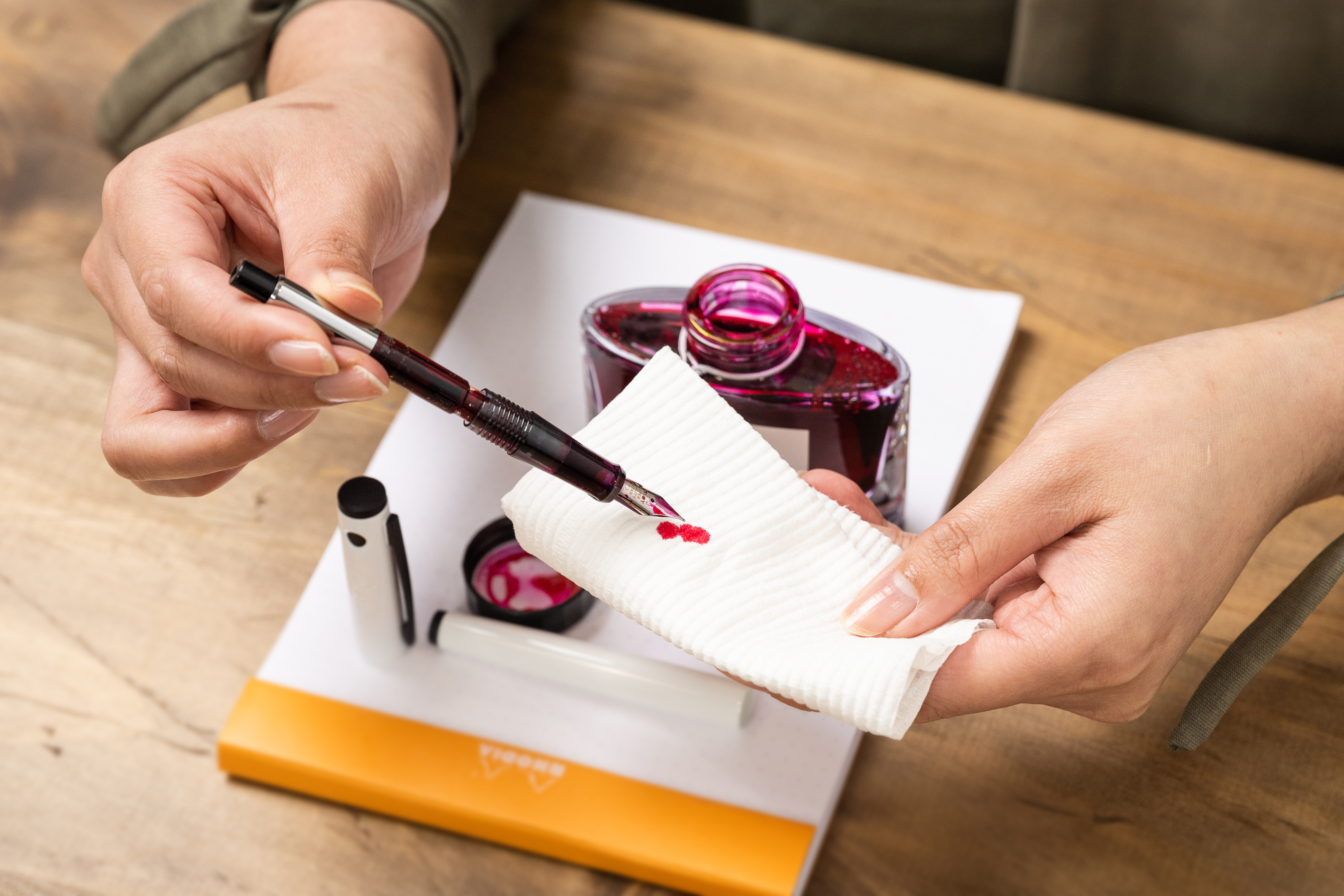
Proper Storage & Handling
Fountain pens are beautiful instruments and should be handled with care. When not in use, always recap the pen, even if it’s only for a few minutes. This can prevent the nib from getting damaged or ink from drying and giving you trouble when you need it again. It’s fairly safe to place it horizontally on the table beside you during use (capped).
When storing the pen for a longer time, such as overnight or even for a few days, it should be stored vertically with the nib pointing upward and the cap on. It’s good practice to store it in a cup or a dedicated pen holder to prevent it from tipping over during the night.
Finally, never store the pen nib down for any reason. This can often lead to an ink-filled cap and a nib covered in dried ink.
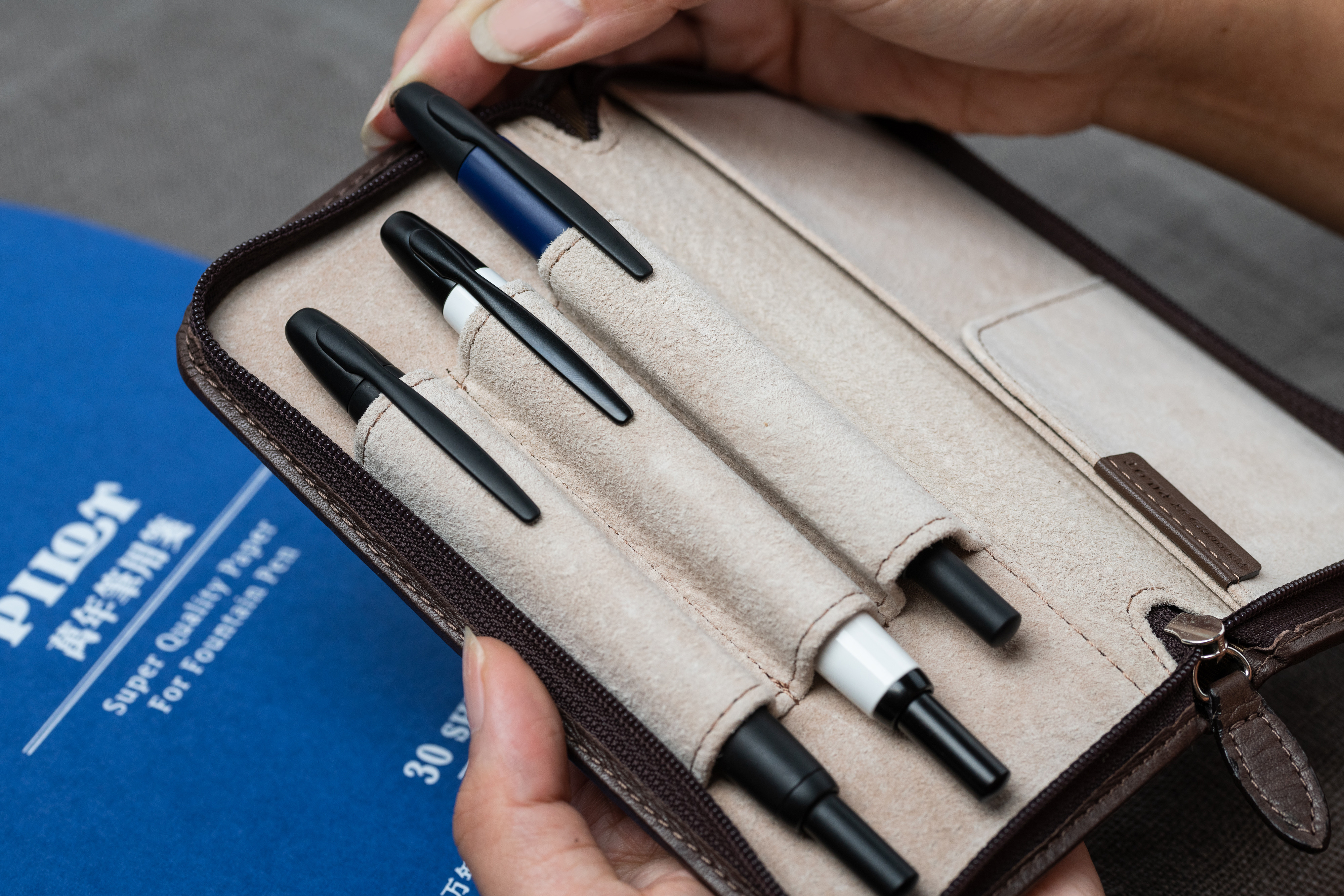
The Beauty of a Well-Designed Fountain Pen
A well-designed fountain pen, like those in PILOT’s CUSTOM series, is an investment in quality and craftsmanship. Explore our collection and experience the beauty of precision writing for yourself.
It’s a fascinating piece of technology, and now that you know how it works, here are some frequently asked questions about the mechanics of a fountain pen.
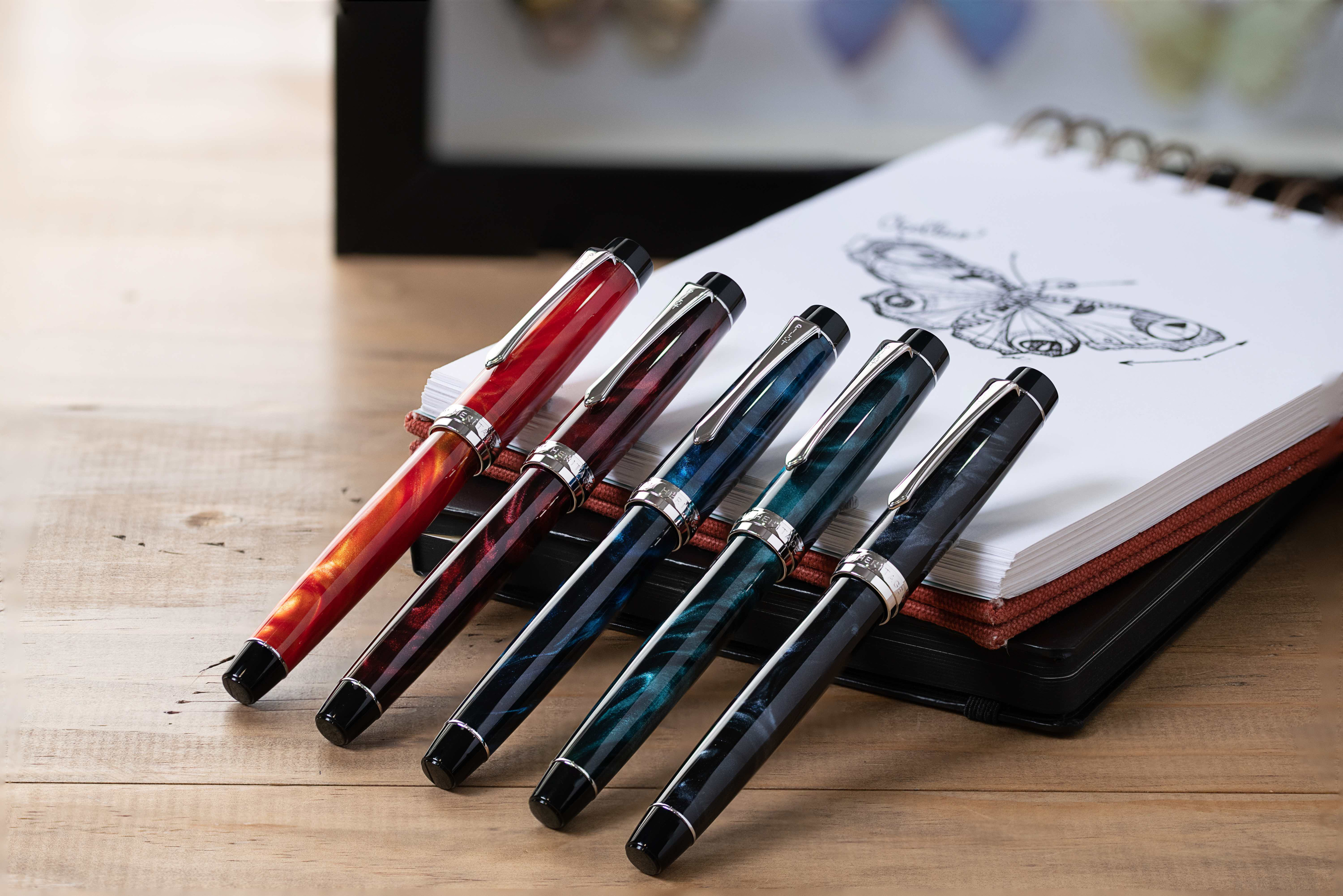
Why do Fountain Pens Write so Smoothly?
That’s because the capillary action of the fountain pen delivers ink smoothly and requires very little pressure to function, greatly lowering the resistance between the page and the pen.
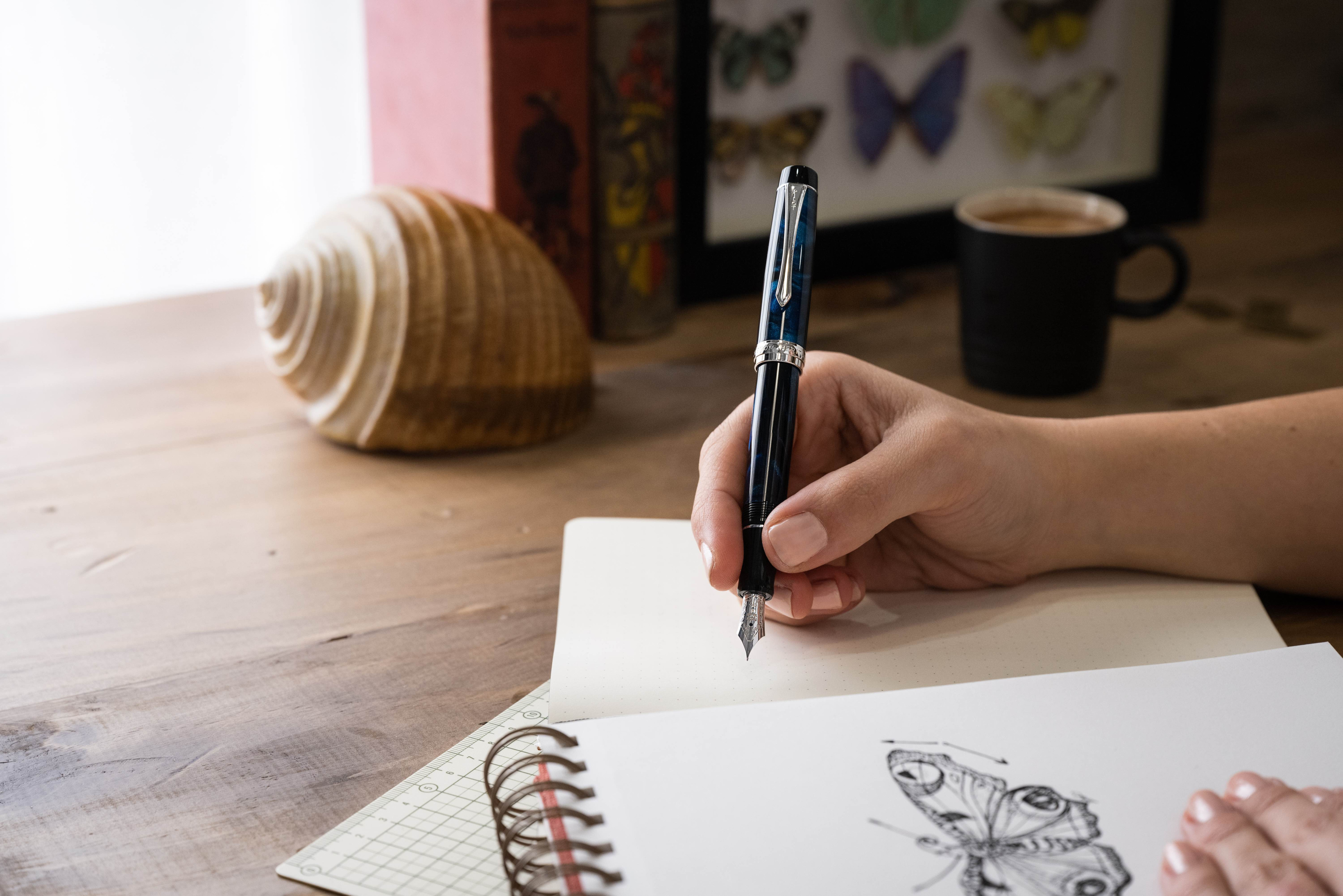
Can Fountain Pens Work Upside-Down?
Some may be able to, very briefly, but the hard answer here is no. Capillary action in a fountain pen relies on gravity, so the nib should be pointed downward when writing. Trying to write upside down will cause the ink to flow back into the reservoir, and you’ll have a dry pen.
Why is My Fountain Pen Leaking?
While leaks can be caused by excessive fluctuations in air pressure (such as when flying) or temperature, the most common cause is a damaged component. If you notice your pen leaking, it’s wise to drain it immediately and determine the cause. Check for cracks, loose fittings, or even an improper seal in the converter.
If your pen is a PILOT, our customer support is always willing to lend a hand.
I’m Left-Handed, Can I Still Use A Fountain Pen?
Yes, you can, thanks to modern advances in ink and nib design. We recommend using a well-behaved ink and a fine nib to help prevent smudging when writing left-handed. Finer nibs lay down less ink on the page, which means quicker drying times—ideal for left-handers who tend to push the pen across the paper and may accidentally smear fresh ink.
In particular, we suggest a fine nib rather than an extra fine, as it suits left-handers well while still providing smooth writing. It also reduces the feedback—or "scratchiness"—you might get from an extra fine nib, similar to writing with a pencil.
For more info, read our blog post on using a fountain pen as a left-handed writer.
About Author
Sophia Le
Resident Fountain Pen Fanatic at Pilot Pen Australia.
Capless Collector. Staffy Lover. Casual Gamer and Maker.
Currently a Stardrop Seeker in Stardew Valley after vacationing in Baldur’s Gate and Hyrule.
